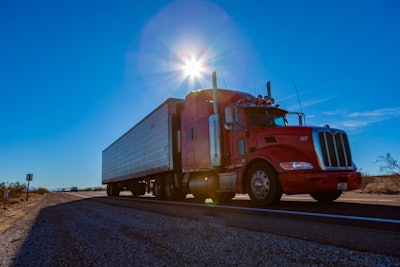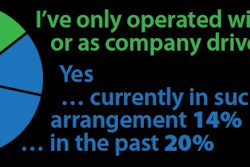
 The notice of proposed rulemaking, available for public comment here until midnight tonight, Oct. 26, sets a five-point test for determining whether a worker should be classified as an employee or whether they can be classified as an independent contractor.
The notice of proposed rulemaking, available for public comment here until midnight tonight, Oct. 26, sets a five-point test for determining whether a worker should be classified as an employee or whether they can be classified as an independent contractor.For the first time, the Department of Labor is intent to define how to determine if a worker can be deemed an independent contractor under federal law and, vice versa, what workers should be classified as company employees.
In the case of trucking, that could offer clarity to motor carriers as to the legality of their relationships with independent contractor owner-operators, and just what circumstances dictate when an operator should be treated as a company employee driver under the labor law.
It’s a distinction that’s been missing from the federal Fair Labor Standards Act, and a gray area often enough used as a sword against motor carriers in lawsuits alleging driver misclassification. It’s also a standard that pertains directly to how motor carriers and contract owner-operators most often work together — that is, an owner-operator hauls in an exclusive lease under the DOT authority of a larger motor carrier. The definition sought by DOL would provide a stark contrast to the highly restrictive rules eyed by states regulating worker classification, such as A.B. 5 enacted in California late last year.
“I think that this is a step in the right direction for both motor carriers and independent contractor owner-operators,” said Elena Adang, an attorney at the nationwide transportation-focused law firm Taylor & Associates. “Because it’s providing clarity on how owner-operators can continue to do the work they want to do in the way they want to do it, while providing carriers a clearer legal standard for those contractor relationships.”

However, the DOL’s definition does have a considerable drawback: It would not limit states from setting their own wage and hour rules that set more strict criteria for determining a driver’s contractor/employee classification.
So while a fleet’s independent contractor set-up might be fine within FLSA under this updated definition from the Labor Department, even the traditional owner-operator lessee set-up could run afoul of ABC tests that the one codified by California’s A.B. 5. (Trucking is operating under a court-issued exemption from that California law until litigation against it concludes.)
Nonetheless, DOL’s definition is meant to provide guidance where none has existed within the FLSA for employers and for courts in determining whether a worker is classified correctly.
The notice of proposed rulemaking, available for public comment here until midnight tonight, Oct. 26, sets a five-point test for determining whether a worker should be classified as an employee or whether they can be classified as an independent contractor.
The so-called economic realities test weighs two points most heavily: (1) an employer’s ability to exert control over their contractors, such as, in the case of trucking, a motor carrier dictating loads, schedules, routes, etc., to an independent contractor and (2) the contractor’s opportunity for profit and loss.
If both of those points weigh toward contractor status, the worker can be classified as an independent contractor under the DOL’s proposed definition. If those points are split or are still unclear, courts and employers are then instructed to consider the other three factors — skills required, permanence of the working relationship and whether the worker is part of an integrated unit of the company’s production.
In short, “the test considers whether workers are in business for themselves or are economically dependent on another enterprise,” said Brent Hockaday, an attorney at Bell Nunnally & Martin, a Dallas-based firm. “Courts like to defer to the Department of Labor,” in making these types of determinations.
For example, take the case of an owner-operator who owns his/her own truck and operates under another motor carrier’s authority. If they largely work a carrier’s load board or with dispatch to select their loads, then set their own routes and schedules to execute those hauls, they’d likely be considered an independent contractor under this definition given both opportunity for profit/loss and a measure of control of load selection and execution. For a driver whose loads and work schedules are wholly dictated by the carrier, even if they’re deemed an independent contractor by that carrier, things would like be different. A court would be hard-pressed to say that driver met the contractor criteria of the economic realities test.











